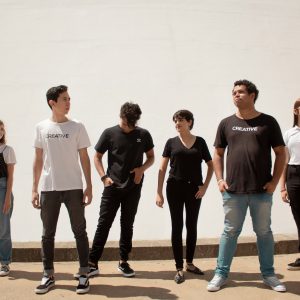 View Winners →
View Winners → Pasadena Professor Reveals History of African-Americans in Monrovia

Janet, Sam, Larry, and Uncle Tim Spicer on fishing trip in San Gabriel Mountains, circa 1950s. – Photo Courtesy of Councilmember Larry Spicer
By J. Shadé Quintanilla
Last Friday, Aug. 7th, Pasadena City College Associate Professor Susie Ling lectured about her extensive research on the history of African-Americans in Monrovia. Held at the Duarte Historical Society and Museum, the presentation recounted a past that echoes many of today’s race issues. Through photos and retold stories, the audience learned about the struggles and the triumphs of the Monrovia black community.
Professor Ling pieced together an ethnic history by reading public records and speaking with Monrovia residents and community members of other counties. She was able to collect 40 oral histories and trace the origins of the first black families in Monrovia.
Starting with the 1870s to the early 1900s, Ling revealed that African Americans moved to the city and the surrounding areas to seek economic opportunity. John I.W. Fisher, a farrier for Lucky Baldwin’s horses, was the first African-American to settle in Monrovia in 1875. He later brought more black families from South Carolina, with more families arriving from Missouri. Professor Ling noted that the Fisher family has lived in Monrovia for seven generations.
She continued on to the early 1910s when the city became segregated. With the Pacific Electric train separating the city into two parts, African-Americans and Mexican-Americans were forced to live on the south side of the tracks. Black residents, many who had left to escape racism in the South, were faced with many racial restrictions until the 1970s. They were kept out of businesses that had signs that said “White Trade Only.” They were segregated at the Lyric Theater. Their children were only allowed to attend Huntington Elementary, a school for African-Americans and Mexican-Americans until 1970.
One audience member, who lived during the city’s time of segregation and worked for Monrovia’s Parks and Recreation Department, commented that the city’s public pool had “colored” days. The pool was cleaned specifically on Fridays after the “colored” day when blacks, Latinos, and Asians could swim because the water was seen as “dirty” by whites.
Professor Ling talked about the racial tension that existed during the 1960s and early 1970s. The city saw race riots after the death of a 13-year-old African-American, Mark Edward Allen. Police arrested Allen for suspicion of shoplifting and sent him to the Monrovia City Jail on Nov. 16, 1971. That night, police reported Allen committed suicide. The black community was not convinced. Family members who went to retrieve the teenager’s body the next day noticed that there were bruise marks on his neck. By that weekend, the city had erupted into 21 fires set by angry and frustrated residents. The NAACP filed a complaint against the Monrovia police, but they lost.
At the end of the presentation, audience members shared their thoughts and personal experiences. Former Mayor of Duarte and the last PTA president of Huntington Elementary, Lois Gaston, encouraged everyone to keep sharing stories. “The story of the young man who was killed in jails seems similar to the story of the young woman who was killed a few weeks ago,” she said. “The reason I say that is not to say that we are as divided or bigoted as we were before, but there is tendency to fall back on the bad things if we don’t keep these stories going.”
Professor Ling’s findings come at a time when racially charged incidents, like the death of Sandra Bland and the Charleston church shooting, have dominated the news. She will present the second part of her research, “Recuerdos de Monrovia: Mexican Americans in Monrovia” on Oct. 2 at the Monrovia Historical Museum at 2 p.m. For more information about Professor Ling’s research, visit https://susieling.wordpress.com.




































































































